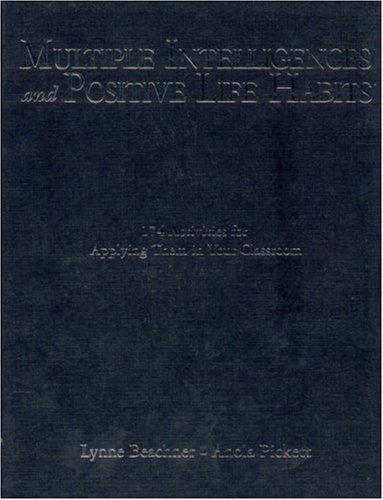Multiple Intelligences and Positive Life Habits 174 Activities for Applying Them in Your Classroom
LYNNE BEACHNER, PhD, is principal of St. Francis Xavier School (SFX), in Kansas City, MO, and Adjunct Professor in the Department of Education, Rockhurst University (RU). In 1998, St. Francis Xavier School and Rockhurst University entered into a formal partnership to strengthen the curricular offerings at SFX and enhance the training of preservice teachers at Rockhurst. SFX is located across the street from RU so the sharing of resources and staff has been an exciting venture. Prior to coming to St. Francis Xavier, Dr. Beachner was director and coauthor of a 3-year Federal Innovations in Education Grant implemented at Kansas Middle School of the Arts and Paseo Academy in the Kansas City, MO, School District. She also worked for the Kansas City School District as Coordinator of Instruction, was principal of Our Lady of the Presentation School, and taught students at the middle school level. She lives with her husband, Gary Neal Johnson, a professional actor, and her two sons—Drew (10) and Ben (6)—who are a continued source of joy. The family enjoys reading, playing cards, attempting brain teasers, going to the theater, and camping. ... Read more Read less
It is an excellent resource not only for new teachers entering the profession but also for the more experienced to access a range of strategies in dealing with and recognizing children's way of learning. It nurtures a Can Do attitude that celebrates success' - Nurturing Potential The authors have written this book to provide teachers with a toolbox to help them know their students in an in-depth and personal way. With this knowledge, classrooms can celebrate the gifts of every student. It is important for teachers to develop relationships with students and aid them in developing a sense of connectedness with a group. Traditional IQ tests measure language and mathematical abilities, but empirical studies designed by multiple intelligence pioneer Howard Gardner identify other ways in which people are intelligent. Gardner identifies eight intelligences: verbal/linguistic, mathematical/logical, visual/spatial, musical/rhythmic, bodily/kinesthetic, naturalist, interpersonal, and intrapersonal. By using strategies that foster these intelligences, teachers can help students recognize their innate strengths and talents, and how they learn best. The authors offer more than a dozen activities specifically tailored to each of the eight multiple intelligences, for a total of 174 classroom activities in all. These activities will serve as a guide for teachers who know the value of using Gardner's "intelligences" as teaching and learning strategies in the classroom. ... Read more Read less











